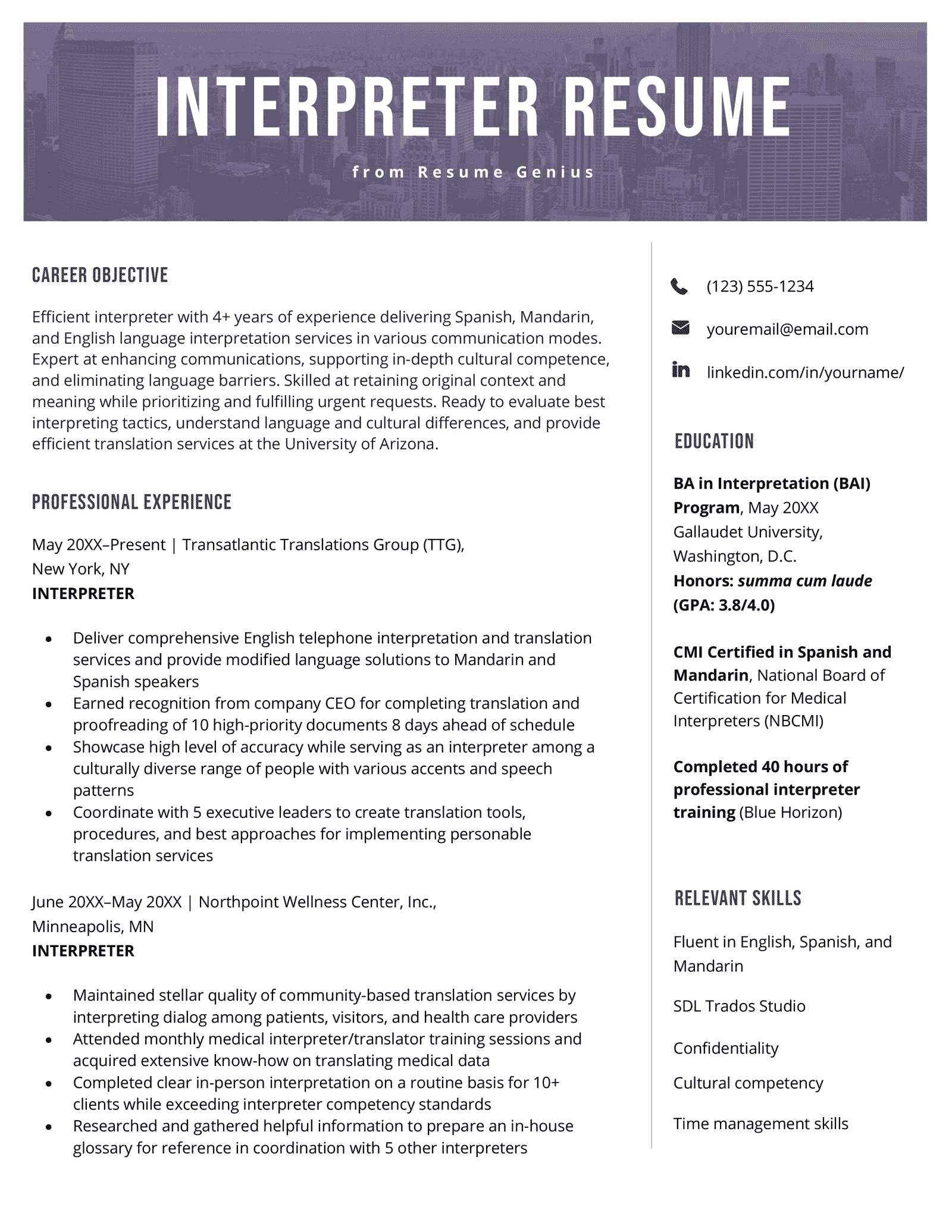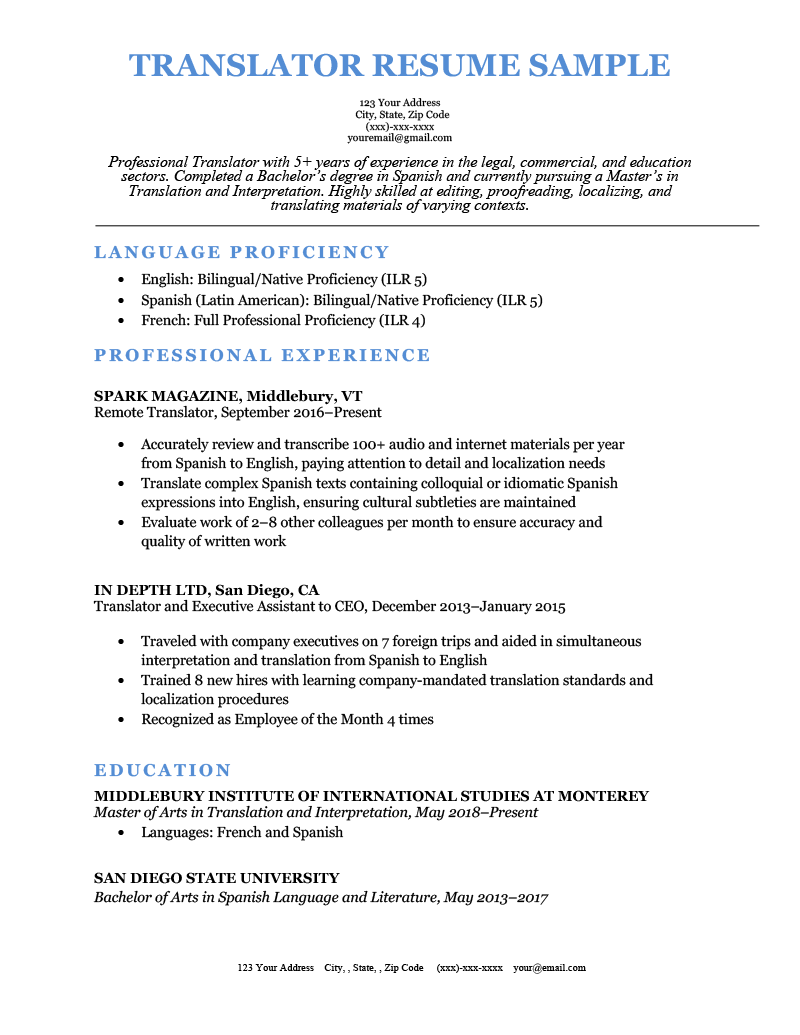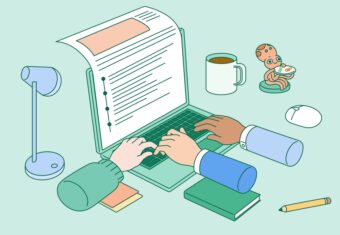Transcriptionist Resume Template (Text Format)
FIRST AND LAST NAME
Email: your.email@email.com
Phone: (123) 456-7891
Address: Street, City, State
LinkedIn: linkedin.com/in/yourprofile
Summary
Self-driven professional in both transcription and captioning with 4 years’ experience in reviewing, proofreading, translating, and analyzing transcripts. High level of accuracy, wide knowledge of computer applications, and a good listener with the ability to manage information effectively and efficiently. Outstanding communication skills with a proven ability to manage multiple projects while meeting challenging deadlines.
Professional Experience
Transcriptionist
LINGUALINC – San Antonio, TX |NOV 2019 – Present
- Provided verbatim and non-verbatim transcription services for various industries including 7 educational and financial businesses
- Analyzed workflow and prioritized work accordingly to meet policy-mandated turnaround time
- Interfaced effectively with 3 transcription service vendors
Legal Transcriptionist
BETA LEGAL – San Antonio, TX | AUG 2017 – NOV 2019
- Performed extensive research related to complex legal issues pertaining to federal, state, and local land use and zoning regulations
- Performed court reporting transcription for 3 attorneys on a daily basis
- Transcribed court proceedings for various firms on a contract basis
- Managed transcription of depositions, remote depositions, sworn statements, arbitrations, and hearings
- Delivered transcriptions of 100+ audio and video recordings for attorneys/public defendants
Education
University of Phoenix – Tempe, AZ | May 2021
Master of Arts in English Lit
University of Phoenix – Tempe, AZ | May 2016
Bachelor Of Arts in English
- Graduated cum laude
Certifications
- General Transcription Certification – Transcription Certification Institute (TCI)
- Legal Transcription Certificate Program – Meditech
Key Skills
- Editing & proofreading
- Typing speed of 70 WPM
- Zoom & Google Meet
- Microsoft Office
Languages
- Fluent in English and Spanish



















